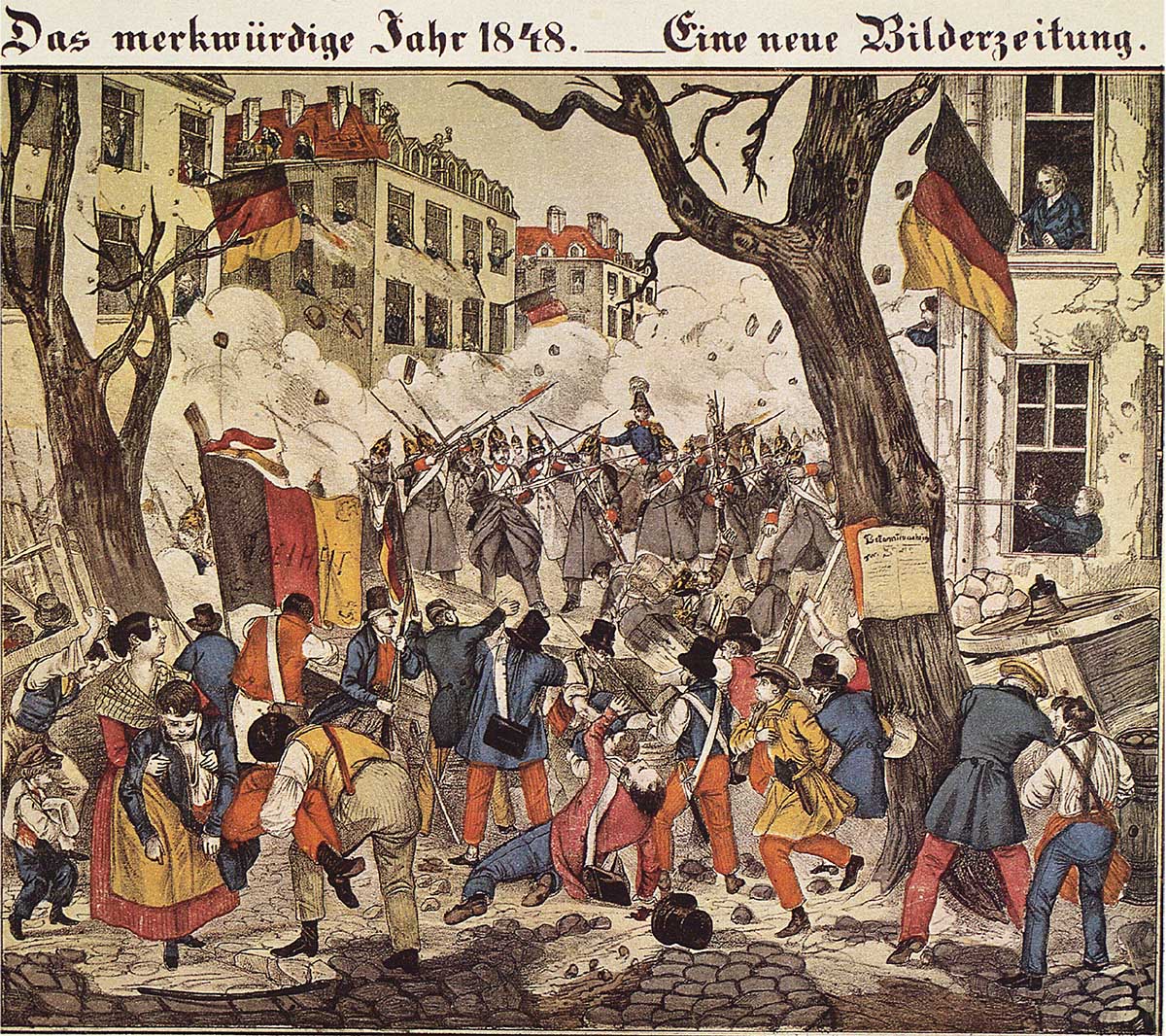A History of World Societies:
Printed Page 726
A History of World Societies Value
Edition: Printed Page 733
The Revolutions of 1848 in Central Europe
Throughout central Europe, social conflicts were exacerbated by the economic crises of 1845 to 1846. News of the upheaval in France in 1848 provoked the outbreak of revolution. Drawing on the great traditions of 1789, liberals demanded written constitutions, representative government, and greater civil liberties from authoritarian regimes. When governments hesitated, popular revolts followed. Urban workers and students allied with middle-
Compared with the situation in France, where political participation by working people reached its peak, revolts in central Europe tended to be dominated by social elites. They were also more sharply divided between moderate constitutionalists and radical republicans. The revolution in the Austrian Empire began in 1848 in Hungary, when nationalistic Hungarians demanded national autonomy, full civil liberties, and universal suffrage. When Viennese students and workers also took to the streets and peasant disorders broke out, the Habsburg emperor Ferdinand I (r. 1835–
The revolutionary coalition was also weakened and ultimately destroyed by conflicting national aspirations. In March the Hungarian revolutionary leaders pushed through an extremely liberal, almost democratic, constitution. But the Hungarian revolutionaries also sought to create a unified Hungarian nation. The minority groups that formed half the population — the Croats, Serbs, and Romanians — objected that such unification would hinder their own political autonomy and cultural independence. Likewise, Czech nationalists based in Bohemia and the city of Prague came into conflict with German nationalists. Thus nationalism within the Austrian Empire enabled the monarchy to play off one ethnic group against the other.
The monarchy’s first breakthrough came in June when the army crushed a working-
When Ferdinand I abdicated in favor of his young nephew, Franz Joseph (see “Great Britain and the Austro-Hungarian Empire”), only Hungary had yet to be brought under control. Another determined conservative, Nicholas I of Russia (r. 1825–
After Austria, Prussia was the largest and most influential kingdom in the German Confederation. Prior to 1848, middle-

Elections were held across the German Confederation for a national parliament, which convened to write a federal constitution for a unified German state. Members of the new parliament completed drafting a liberal constitution in March 1849, which ignored calls for more radical measures from workers and socialists, and elected King Frederick William of Prussia emperor of the new German national state. By early 1849, however, Frederick William had reasserted his royal authority, contemptuously refusing to accept the “crown from the gutter.” When Frederick William tried to get the small monarchs of Germany to elect him emperor on his own terms, with authoritarian power, Austria balked. Supported by Russia, Austria forced Prussia to renounce all its unification schemes in late 1850. The German Confederation was re-
Thus, across Europe, the uprisings of 1848, which had been inspired by the legacy of the late-